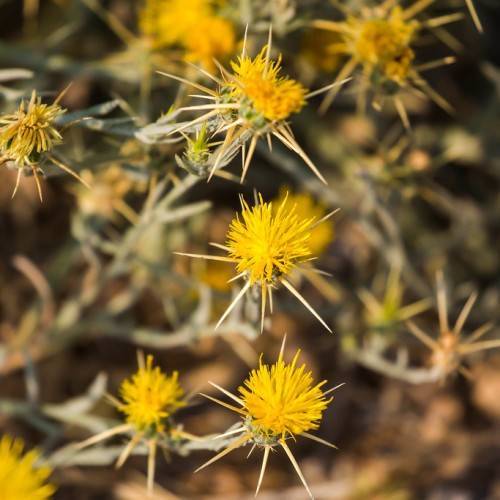
Yellow Starthistle
Centaurea solstitialis
Watering:
Minimal
Hardiness Zone:
Sun:
full sun
Fruits:
Fruits Ready In Fall
Leaf:
Yes
Growth Rate:
Low
Poisonous To Pets:
Yes
Drought Tolerant:
Yes
Salt Tolerant:
Yes
Thorny:
Yes
Invasive:
Yes
Care Level:
Medium
watering
Black Starthistle should be watered regularly, but not too frequently. During the spring and summer months, the plant should be given about an inch of water each week. Water in the morning, so that the excess water can evaporate throughout the day and not be left to sit on the soil and cause root rot. In the winter months, this plant should only be watered every 2 to 3 weeks. Overwatering is just as dangerous to this plant as underwatering is, so make sure you are familiar with your plant’s watering needs before you begin.
sunlight
Black Starthistle (Centaurea nigra) requires full sun to partial shade, with the most favourable locations typically receiving 6 hours of direct sunlight each day. The plant prefers nutrient-rich soil with average moisture levels. Regular watering is recommended during extended periods of hot weather or drought conditions. To conserve soil moisture, mulching around the base of the plant is recommended.
pruning
Black Starthistle should be pruned annually in the spring shortly after it has started to flower. This late pruning ensures that the plant’s root system remains intact, allowing it to regenerate growth for the following season. Pruning should be done judiciously to remove only the flower heads, not the stems. This will ensure that the plant does not become leggy and creates a more balanced and dense growth. Pruning back this plant too much can weaken the plant and leave it vulnerable to disease or attack from pests.
